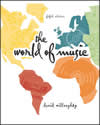|
 |  The World of Music, 5/e David Willoughby
Music of the Classic Period (1750 to 1820)
Glossary
| Sonata form | A structure that composers from the classic era and since have commonly used for the first movement of a sonata, symphony, concerto, or string quartet (or other similar chamber music music work). It includes three main sections: the exposition, development, and recapitulation and often begins with an introduction and ends with a coda. The exposition has two theme areas in contrasting keys. The development is based on material from the exposition. The recapitulation is a return to previous material stated in the exposition.
|  |  |  | | Theme and variations | An instrumental form based on a stated theme followed by a series of variations on that theme.
|  |  |  | | Minuet and trio | A stately dance in triple meter in a b a form. It is found most often as the third movement of a symphony, sonata, or string quartet. A scherzo and trio form is similar, but it has a faster tempo and increased rhythmic energy. The form and function are the same as the minuet and trio.
|  |  |  | | Rondo | Based on two or more contrasting theme areas, each followed by a return of the opening theme. Common forms of the rondo may be depicted as a b a c a or a b a c a b a. It is commonly used as the spirited final movement of a classic era sonata, symphony, or string quartet.
|  |  |  | | Sonata, symphony, and concerto | A sonata is a multimovement work for piano or for a solo instrument with piano. The typical order of movements is fast, slow, dance, fast. In the baroque period, the sonata was a multimovement work written for a solo instrument and continuo, and the trio sonata was written for two solo instruments and continuo. A symphony is a multimovement work for symphony orchestra. The typical order of movements is fast-slow-dance-fast. This pattern was standard in the classic period but less adhered to in the romantic and modern eras. A concerto is a three-movement work for solo instrument and orchestra that emerged during the baroque period and has been a common instrumental genre ever since. The concerto grosso was an important genre of this period that featured a small group of soloists with orchestra. The arrangement of the movements is fast-slow-fast. Many concertos since the baroque era include a cadenza, an unaccompanied passage in free rhythm in which the soloist displays his or her greatest virtuosity.
|  |  |  | | Cadenza | Many concertos since the baroque era include a cadenza, an unaccompanied passage in free rhythm in which the soloist displays his or her greatest virtuosity.
|  |  |  | | Chamber music: String quartet | Works for solo instruments performing together in small ensembles, such as a string quartet, a woodwind quintet, or a piano trio. Each part is played on one instrument (no doubling). In the classic era, the string quartet (first and second violins, viola, and cello) became the standard chamber music genre. The quartet typically was a four-movement work with a fast-slow-dance-fast pattern, although many exceptions to this pattern exist.
|  |  |  | | Opera | A dramatic stage production that involves soloists who sing arias and recitatives, solo ensembles, choruses, dancing, dramatic action, costumes, staging, and orchestral accompaniment. It began at the beginning of the baroque era and evolved into a genre that continues in popularity throughout the Western world, particularly in Italy.
|  |  |  | | Staccato and legato | Separated or connected notes
|
|
|



 2003 McGraw-Hill Higher Education
2003 McGraw-Hill Higher Education